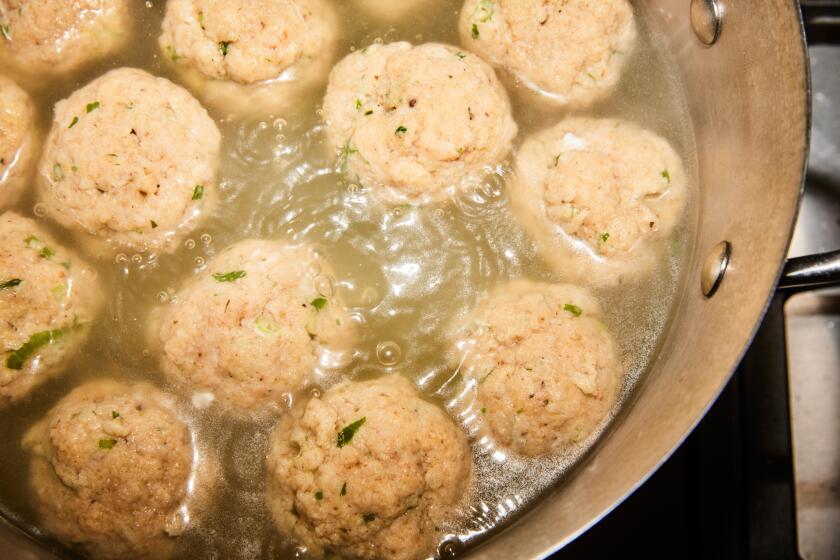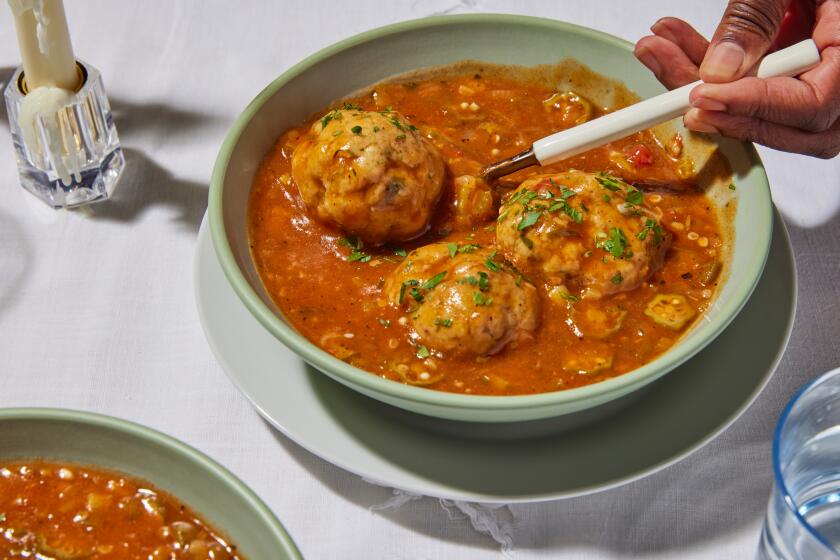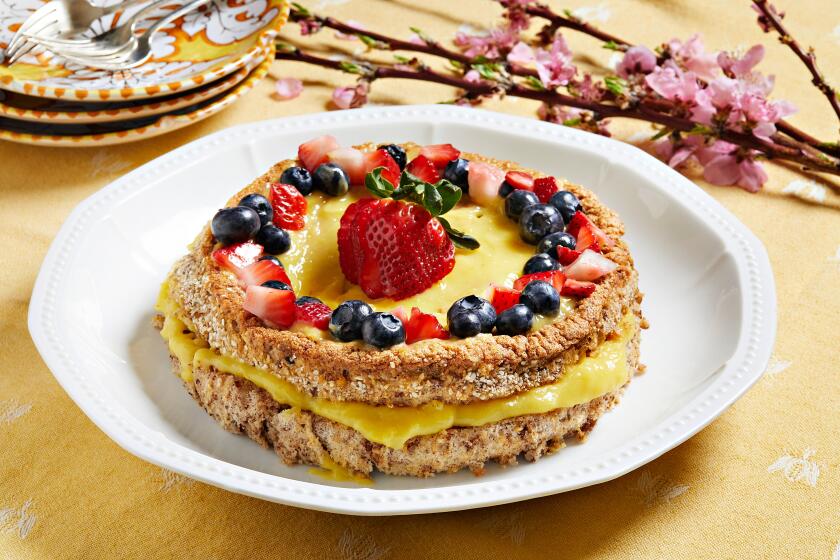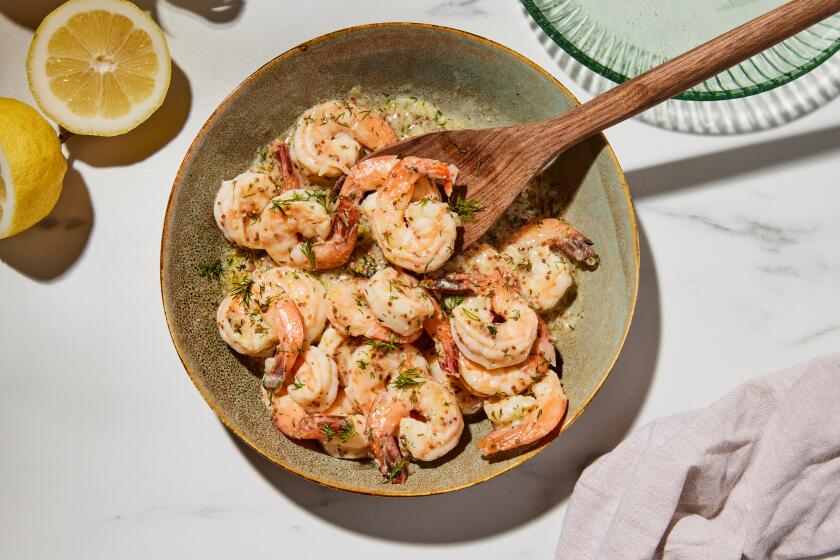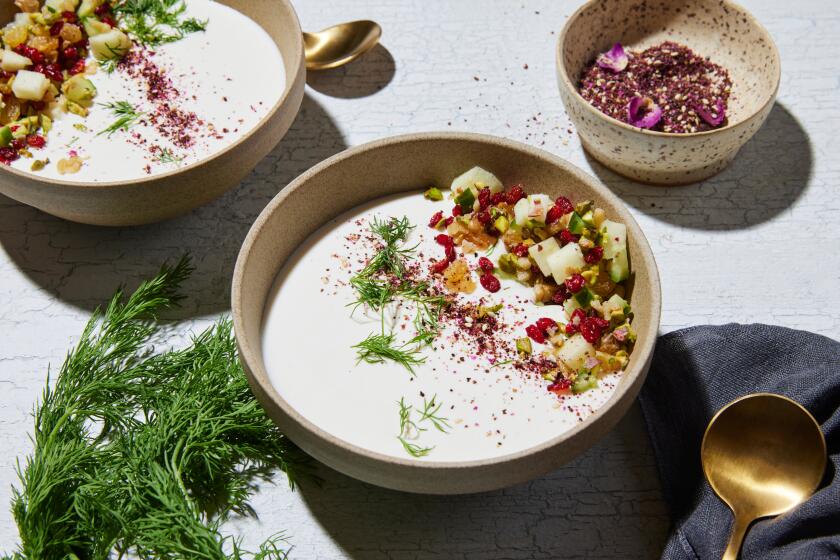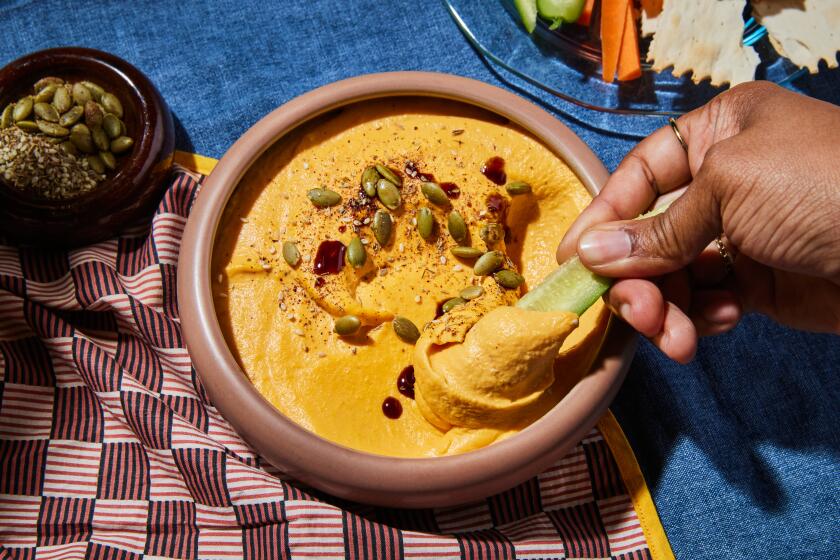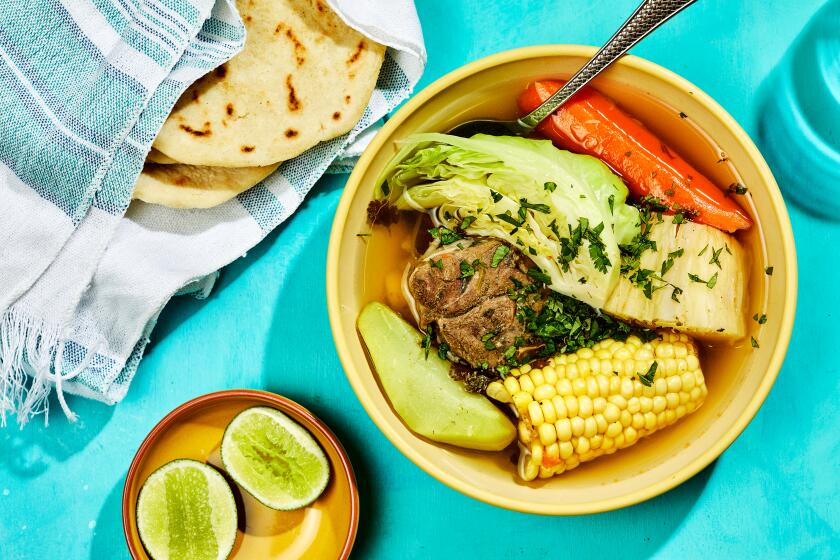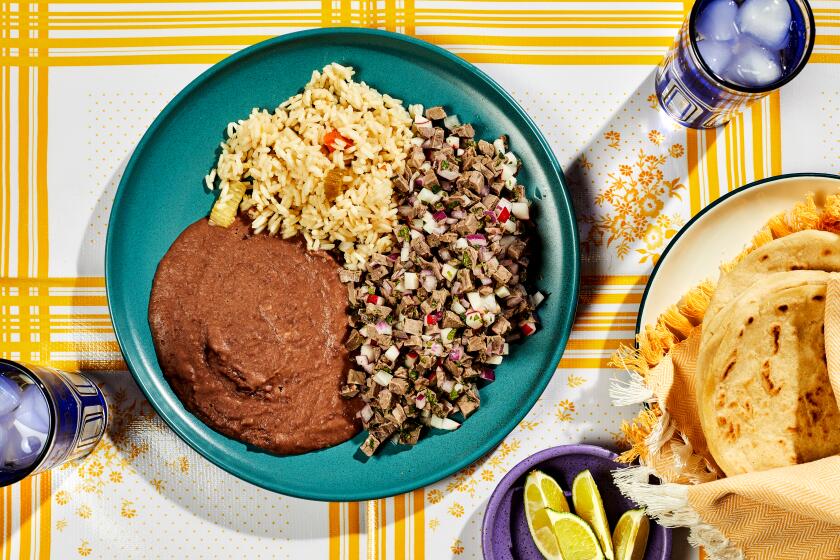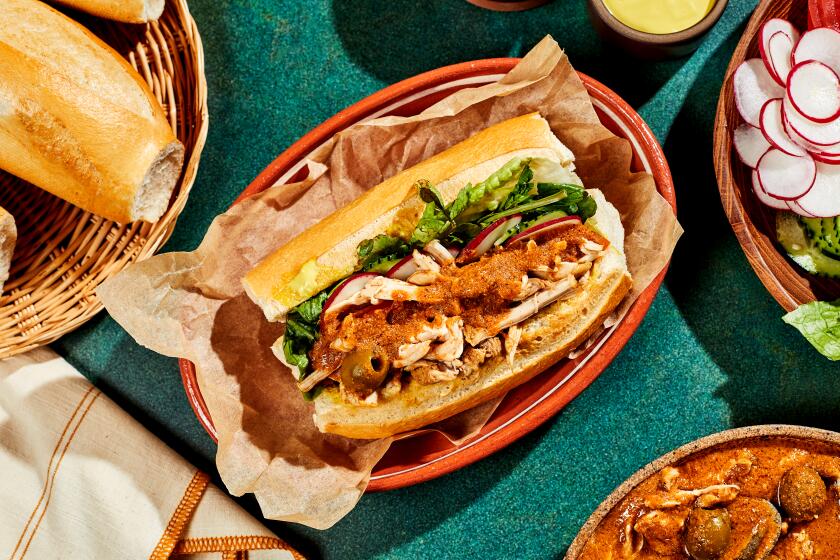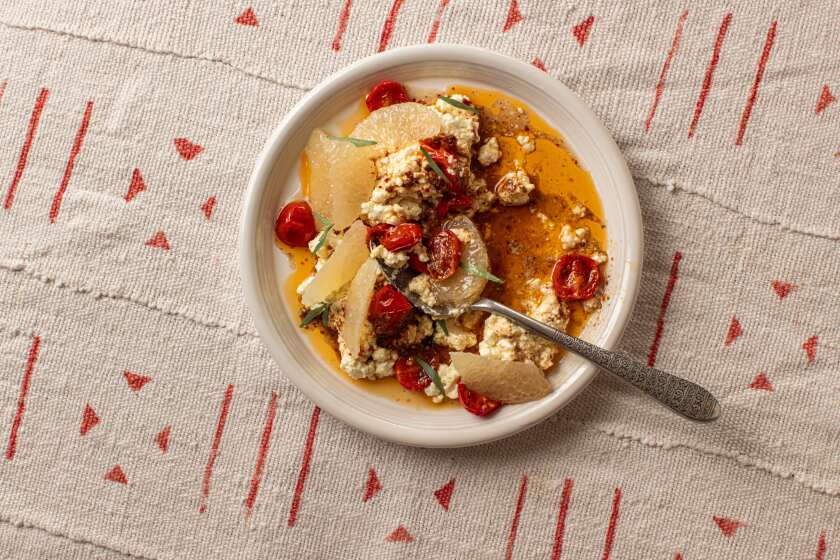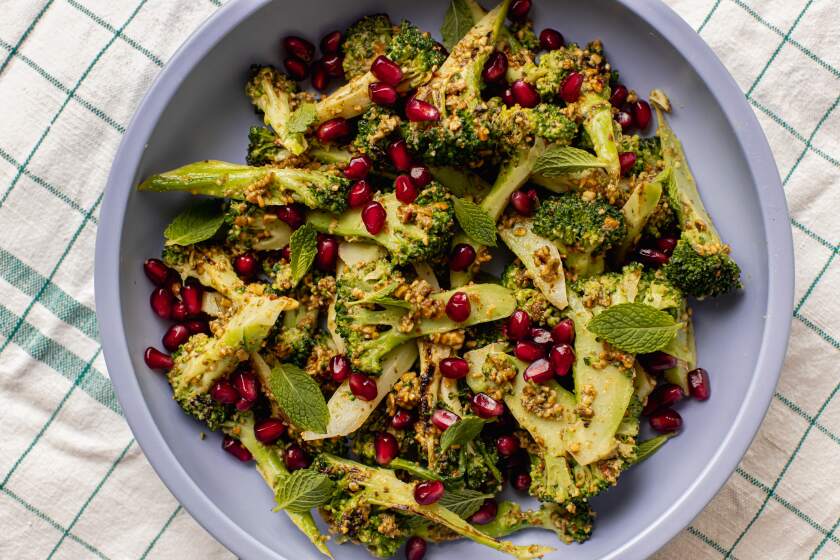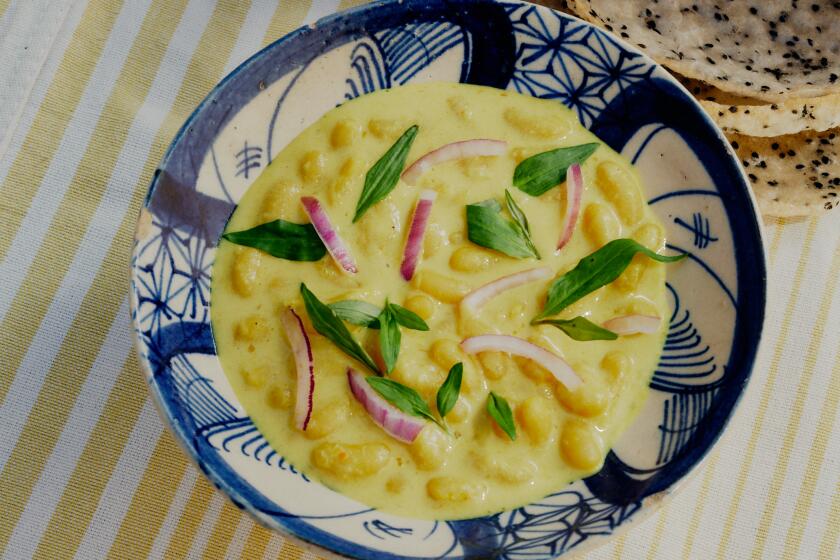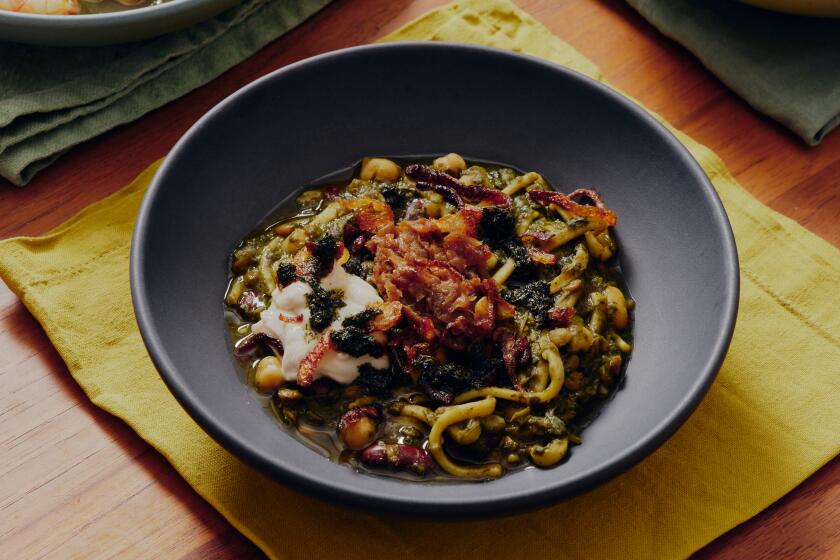Spicy bulgur salad with sweet peppers and pepper paste
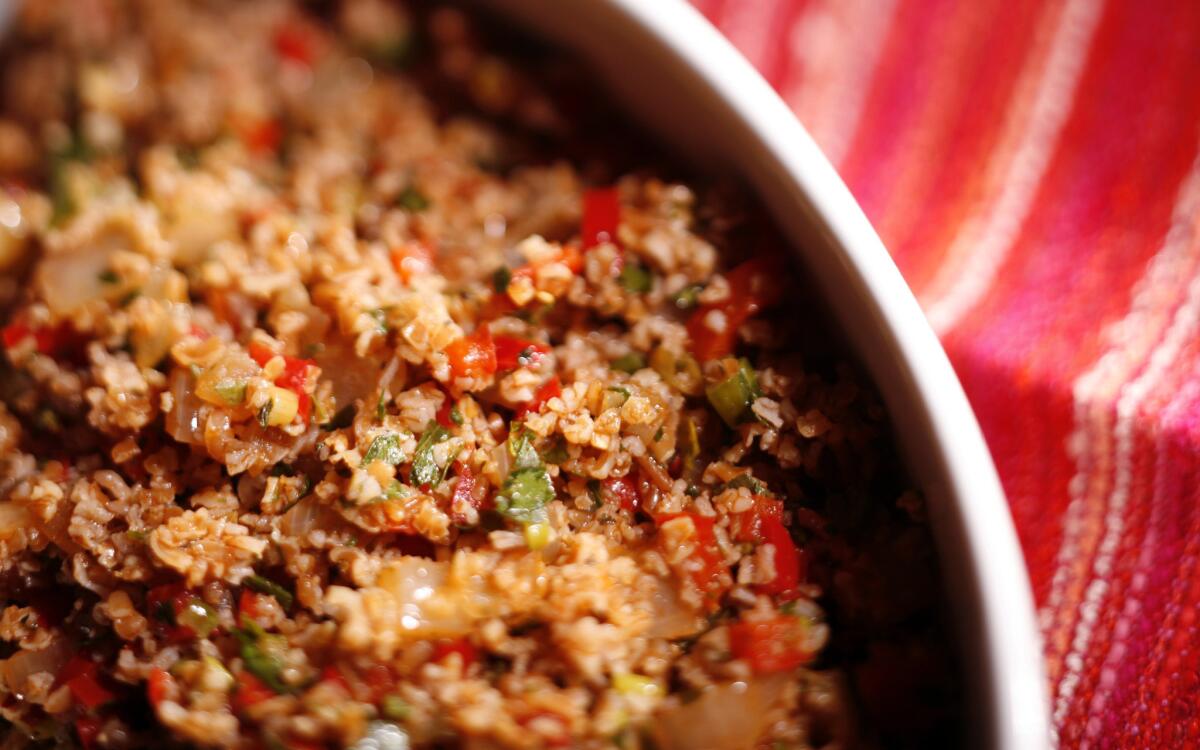
You can find bulgur in well-stocked supermarkets and natural foods stores. Middle Eastern markets have more varieties, often labeled by numbers: Bulgur No. 1 is finely ground, No. 2 is medium or medium-fine, No. 3 is coarse or medium-coarse, and No. 4 is coarse or extra-coarse. (The package descriptions of different companies vary slightly.) Use No. 1 or No. 2 for this salad, depending on how much chew you want.
Turkish red pepper paste comes in hot and mild varieties; if you use the mild one in this recipe, you may want to add a little more. Sometimes the paste is labeled paprika paste. If there is no English on the label, the word “aci” tells you it is hot. Even the hot version has some sweetness and is not as fiery as Southeast Asian pepper pastes such as sambal oelek. You can use tomato paste instead of pepper paste and spice the salad with semi-hot pepper flakes.
Combine the bulgur and one-half teaspoon salt in a medium bowl. Pour the hot water over the bulgur, cover and set aside until the water is absorbed and the bulgur is tender but still slightly chewy, about 15 minutes.
If the white ends of the green onions are thick, halve them lengthwise. Cut the white and green parts of the green onions in thin slices. You will need about one-third cup.
Heat 3 tablespoons oil in a large skillet over medium heat. Add the chopped brown onion and the peppers and saute, stirring occasionally, until they are tender but not brown, about 15 minutes. Add the cumin, stir over low heat for 30 seconds and remove from the heat.
In a small bowl, whisk the pepper paste with 2 tablespoons oil and 2 tablespoons lemon juice until blended. Whisk in 1 additional tablespoon lemon juice and a pinch of salt and pepper. Add this dressing to the bulgur and toss with a fork to blend. Add pepper flakes if desired. Lightly stir in the sauteed vegetable mixture, followed by the mint, green onions and parsley. Taste and adjust seasoning; add more lemon juice and/or oil if desired. Serve the salad at room temperature.
Get our Cooking newsletter.
Your roundup of inspiring recipes and kitchen tricks.
You may occasionally receive promotional content from the Los Angeles Times.

